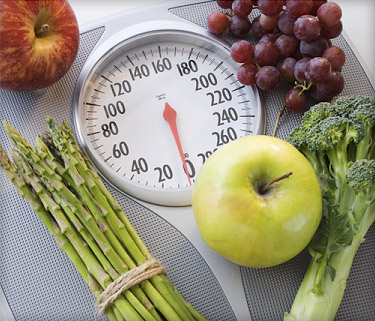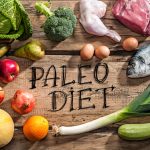Are you confused about which healthy diet to choose? Some of the key differences between clean eating, paleo, Whole30, keto, and plant-based diets are as follows:
- Clean eating is based on the consumption of whole, unprocessed foods.
- Paleo diets are based on the consumption of foods that would have been available to Paleolithic humans.
- Whole30 is a month-long diet that eliminates sugar, alcohol, grains, legumes, and dairy from the diet.
- Keto diets are based on the consumption of high-fat, low-carbohydrate foods.
- Plant-based diets are based on the consumption of plant-based foods, with some diets including animal products and others not.
This information can help you figure out which diet is most likely to work for you.
Choosing a Diet Plan
It can be confusing to figure out which diet plan is the best fit for you. The USDA is responsible for giving nutritional advice to Americans. The USDA recommends the “My Plate” format as a healthy diet.
Many people have dietary restrictions or food allergies that can be helped with specialized diets that restrict certain macronutrients, food groups or foods.
Women need to be particularly mindful about dieting to ensure adequate intake of iron-rich foods, calcium, and vitamin D.
There are a few specialty diets that people use to try to improve their health or lose weight. Some examples are clean eating, paleo, Whole30, plant-based, and keto.
Let’s examines the main differences between popular diet plans to help you choose the one that might be best for you. You should speak to your healthcare provider to learn more about which diet would work best for you.
Clean Eating Diet
Clean eating is not a diet, it is a lifestyle. Eating clean generally includes including real, whole foods most of the time, choosing organic and sustainable options whenever possible.
This means that clean eating is not a one-size-fits-all diet, but rather a flexible approach that can be tailored to each person’s unique needs.
If you want to follow a clean eating diet, you should eat mostly unprocessed foods and pay attention to where your food comes from. A clean eating diet is considered to be healthy because it only includes foods that are unprocessed and whole.
The benefits of a clean eating approach are that you can tailor it to your own needs and preferences.
A clean eating diet doesn’t have to make you feel like you’re depriving yourself. People who “eat clean” can eat whatever they want as long as it fits into their diet.
Some other diets that are based around eating healthy foods are the Mediterranean diet, the pro metabolic diet, and real food diets.
The main problem with placing an emphasis on clean eating is that it might cause some women to develop unhealthy eating habits. Orthorexia is an eating disorder in which someone is fixated on only eating unprocessed foods.
A clean eating diet requires more expensive ingredients than the Standard American Diet, as it eliminates fast foods and processed foods. Here are some tips on how to eat clean on a budget:
While clean eating is a flexible approach to dieting, it may be more successful if the person follows the plan with the help of a dietitian or nutritionist. This is especially true if the person has a history of disordered eating.
Paleo
This is a big trending diet. Instead of consuming agricultural-era foods such as grains, legumes, and dairy, people who follow an ancestral diet only eat foods that would have been available during the Paleolithic era.
Instead of focusing on unhealthy and processed foods, they focus on items such as meat, fish, eggs, fruits, nuts, seeds, and veggies that were available to our hunter-gather ancestors. The diet also deters you from drinking alcohol.
If you eat like a caveman, you can expect to lose fat, have more energy, clearer skin, less bloating, fewer sugar cravings, and less disease-provoking inflammation.
The Paleo diet is effective at eliminating processed foods from your diet, as many of those contain refined grains or added sugars, which are not allowed on the Paleo diet.
This product is likely to help you consume more protein, staving off hunger and promoting weight loss. The diet is also not necessarily low in carbohydrates, so you can avoid the fatigue, headaches, and other side effects associated with carbohydrate-restricted diets.
Some studies indicate benefits for blood sugar control and blood lipid numbers from a Paleolithic-type diet, which may help protect against diseases like diabetes and heart disease.
If you don’t eat dairy, grains, or legumes, you might not get enough of certain vitamins, minerals, and antioxidants. Make sure you’re getting them from other foods that are approved on the Paleo diet.
Whole grains are often demonized in the paleo community, even though there is research linking them to better health outcomes and trimmer waistlines. Instead of using the Paleo philosophy to eat a lot of meat and few plant-based foods, some people use it as an excuse to overindulge.
This throwback diet requires a bigger food budget if you follow recommendations to eat grass-fed meats, wild seafood, and organic veggies. If you’re on a diet that eliminates certain food groups, it can be difficult to know what to eat when you’re socializing with friends.
Don’t just put slabs of meat on your plate. Paleo can be seen as a chance to try new things from a variety of food groups. Arctic char and celery root, anyone?
If you want to keep your meals interesting, search online or invest in some Paleo cookbooks for recipe inspiration. Chicken breast with steamed broccoli can get pretty boring after a while. A dietitian can help you ensure you’re getting the right amount of calcium, vitamin D, and other nutrients every day.
Be sure to eat plenty of carbs if you work out regularly so you have enough power for your stride. Fruits and starchy veggies like potatoes are good sources of carbs.
If you’re interested in trying out a Paleo diet but are hesitant to commit to it fully, you can start by making small changes. For example, you could start by removing dairy from your diet for one week, then refined grains the next week, and so on until you’re following a strict Paleo diet.
Ketogenic
The ketogenic or “keto” diet is all about one thing: fat.
Keto dieters obtain most of their calories from fat, eat very few carbohydrates, and only moderate amounts of protein.
Why the fat payload?
They say that by cutting back on carbohydrates and protein, your body will go into ketosis and start using ketones from stored fat for energy instead of carbs. This will lead to weight loss, fewer energy crashes, and better protection against diseases like diabetes.
You can allow yourself to spend more money on foods like cheese, avocados, coconut oil, egg yolks, fatty nuts like cashews, olive oil, and fatty meats like sardines and bacon with the goal of improving your ability to burn body fat.
Sugar can be the reason some people need to break their relationship with sweets.
A low-carbohydrate diet could also help you to eat less in general because fat is more filling, which can be one mechanism that the diet uses to reduce body fat. Ketone bodies themselves may have a direct hunger-reducing effect.
The ketogenic diet can cause some beneficial changes in metabolism, including making the body more sensitive to insulin and reducing blood triglyceride levels.
A keto diet can help a person lose weight in the short term, but it is not clear if it is effective for long-term weight loss or overall health. The majority of studies done on high-fat eating have been done on rodents.
The fat-first diet limits what you can eat, so you won’t be able to eat some of the most healthy foods, including beans, berries, whole grains, and sweeter vegetables such as peas and carrots.
It can be difficult to stick to this diet long-term because you are not allowed to eat some foods that you enjoy. You may become deficient in certain vitamins and minerals if you are not careful when following a ketogenic diet.
To make sure you’re not missing out on key nutrients, make sure to mix up the types of foods you’re eating. To maintain a varied and nutritious diet, eat from all the allowed food groups every day. Meats, fish, non-starchy vegetables, dairy, nuts, and seeds are all important sources of nutrients, so make sure to include a variety of them in your daily diet.
A supplement containing fiber might be necessary to keep your bowels and the collection of microbes in your intestine healthy. You can change your diet to focus on foods that are high in fat but low in saturated fat, or get your fat from plant sources like olive oil, avocados, nuts, seeds, and fatty fish.
One way to make the keto diet more sustainable in the long term is to follow it a few days a week or a couple weeks each month, interchanging with other days. This allows for a higher carbohydrate and protein intake.
Whole30 Diet
Whole30 is a lot like paleo, only there are stricter rules about what kinds of food are allowed and there is a focus on changing your mindset. White potatoes are allowed in the Whole30 approach, which differs from paleo. Whole30 is a diet similar to paleo in that it does not allow for the consumption of grains or legumes.
The Whole30 diet is more restrictive than a paleo diet, as it does not allow for any alcohol or sugars.
The Whole30 diet has been gaining popularity in recent years. The Whole30 is a more restrictive version of the paleo diet that requires following the diet for at least 30 days. The “rules” are set out in the Whole30 book.
The Whole30 diet prohibits anything that our paleolithic ancestors couldn’t eat or hunt for in the wild. This means no paleo pancakes, muffins, chips, bars, etc.
The pros and cons of the Whole30 approach are debatable. Some say that the Whole30 approach is better than the paleo approach, while others hold the opposite view. Whole30 has been critiqued for being inconvenient, as it can be expensive to buy all the necessary ingredients to prepare meals at home, and it excludes foods such as alcohol.
The Whole30 diet plan is not recommended for anyone who has a history of disordered eating.
The Cleveland Clinic supports the use of the Whole30 diet for some people, though there are no studies looking at its positive or negative effects.
Plant-Based Diet
Plant-based and vegan diets have exploded in popularity over the past decade. A plant-based diet is one that only consists of plants and no animal products. A vegan diet eliminates all animal products, including those used in clothing and other goods.
Plant-based or vegan dieters consume no animal products, including fish, chicken, red meat, eggs, dairy, or honey. While some people who follow a plant-based diet also eliminate oils from their diet, even those that come from plants, others do not.
A plant-based diet has been shown to reduce the risk of heart disease and certain cancers. A vegan diet is a plant-based diet that excludes all animal products. In other words, a vegan or vegetarian diet can be safe for all stages of life if it is planned properly, according to the American Dietetics Association.
However, a vegan diet is not right for everyone. If someone follows a vegan diet, they may not be getting enough of certain nutrients like vitamin B12, calcium, and iron.
When following a restrictive diet, such as a plant-based diet, it is important to be aware that it can lead to disordered eating patterns, especially in women. A vegan or plant-based diet may require some help from a dietitian or nutritionist to make sure all nutrients are accounted for.
Conclusions
The purpose of this article was to take a closer look at some of the most popular diets centered around eating healthy, including clean eating, paleo, Whole30, keto, and plant-based.
We found that some women may be better off not following a specific diet, but by simply choosing more whole foods and fewer processed foods.
Supplement with Purium’s Women’s Defense – It is a synergistic blend of herbs and whole foods that have been chosen for their specific value to women’s health.









